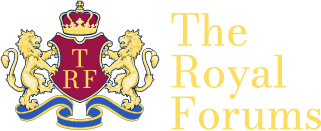- Joined
- Aug 13, 2004
- Messages
- 27,119
- City
- São Paulo
- Country
- Brazil
Pedro IV de Alcántara Francisco António João Carlos Xavier de Paula Miguel Rafael Joaquim José Gonzaga Pascual Cipriano Serafim, King of Portugal and the Algarves from the death of his father until his abdication in favor of his daughter Maria 29 April 1826, proclaimed Emperor Pedro I of Brazil on 12 October 1822 (Queluz, 12 October 1798 - Queluz, 24 Sepember 1834); married 1stly in Rio de Janeiro, 5 November 1817 Archduchess Marie Leopoldine of Austria (Vienna, 22 January 1797 - Rio de Janeiro, 11 December 1826); m.2d Rio de Janeiro 17 Oct 1829 Duchess Amelia of Leuchtenberg (Milan, 31 July 1812 - Lisbon, 26 January 1873)
Reign in Brazil: 1822 - 1831
Reign in Portugal: 1826 - 1826
Predecessor: King João VI of Portugal and the Algarves, Emperor of Brazil
Succeeded in Brazil by: Emperor Pedro II of Brazil
Succeeded in Portugal by: Queen Maria II da Gloria of Portugal and the Algarves
Children Pedro I and Maria Leopoldina: Queen Maria II da Gloria of Portugal, Prince Miguel and Prince João of Brazil, Princess Januária of the Two Sicilies, Countess of Aquila, Princess Paula of Brazil, Princess Francisca d'Orleans, Princess of Joinville, and Emperor Pedro II of Brazil
Children Pedro I and Amalia: Princess Maria Amalia of Brazil
Parents Emperor Pedro I: King João VI of Portugal, Emperor of Brazil and Princess Carlota Joaquina of Spain
Parents Empress Maria Leopoldina: Emperor Franz II of Austria and Princess Maria Teresa of the Two Sicilies
Parents Empress Amalia: Eugene de Beauharnais, Viceroy of Italy, Prince Imperial of France and later Duke of Leuchtenberg & Frst von Eichstädt and Princess Augusta of Bavaria.
Siblings Emperor Pedro I: Princess Maria Teresa of Spain, Prince Antonio of Portugal, Duke of Beira, Queen Maria Isabel and Pricness Maria Francisca of Spain, Prince Isabel Maria and Prince Miguel (or King Miguel I) and Princess Maria da Assunção of Portugal and Duchess Ana de Jesus of Loulé
Siblings Empress Maria Leopoldina: Archduchess Ludovika of Austria, Empress Maria Louise of the French, Emperor Ferdinand I, Archduchess Marie Caroline and Archduchess Caroline of Austria, Princess Maria Clementine of the Two Sicilies, Princess of Salerno, Archduke Joseph of Austria, Queen Marie Caroline of Saxony and Archduke Franz Karl, Archduchess Marie Anne, Archduke Johann and Archduchess Amelie of Austria
Siblings Empress Amalia: Queen Josephine of Sweden & Norway, Fuerstin Hortense of Hohenzollern-Hechtingen, Prince Augusto of Portugal, Duchess Theodelinde of Urach, Duchess Carolina and Duke Maximilian of Leuchtenberg
Reign in Brazil: 1822 - 1831
Reign in Portugal: 1826 - 1826
Predecessor: King João VI of Portugal and the Algarves, Emperor of Brazil
Succeeded in Brazil by: Emperor Pedro II of Brazil
Succeeded in Portugal by: Queen Maria II da Gloria of Portugal and the Algarves
Children Pedro I and Maria Leopoldina: Queen Maria II da Gloria of Portugal, Prince Miguel and Prince João of Brazil, Princess Januária of the Two Sicilies, Countess of Aquila, Princess Paula of Brazil, Princess Francisca d'Orleans, Princess of Joinville, and Emperor Pedro II of Brazil
Children Pedro I and Amalia: Princess Maria Amalia of Brazil
Parents Emperor Pedro I: King João VI of Portugal, Emperor of Brazil and Princess Carlota Joaquina of Spain
Parents Empress Maria Leopoldina: Emperor Franz II of Austria and Princess Maria Teresa of the Two Sicilies
Parents Empress Amalia: Eugene de Beauharnais, Viceroy of Italy, Prince Imperial of France and later Duke of Leuchtenberg & Frst von Eichstädt and Princess Augusta of Bavaria.
Siblings Emperor Pedro I: Princess Maria Teresa of Spain, Prince Antonio of Portugal, Duke of Beira, Queen Maria Isabel and Pricness Maria Francisca of Spain, Prince Isabel Maria and Prince Miguel (or King Miguel I) and Princess Maria da Assunção of Portugal and Duchess Ana de Jesus of Loulé
Siblings Empress Maria Leopoldina: Archduchess Ludovika of Austria, Empress Maria Louise of the French, Emperor Ferdinand I, Archduchess Marie Caroline and Archduchess Caroline of Austria, Princess Maria Clementine of the Two Sicilies, Princess of Salerno, Archduke Joseph of Austria, Queen Marie Caroline of Saxony and Archduke Franz Karl, Archduchess Marie Anne, Archduke Johann and Archduchess Amelie of Austria
Siblings Empress Amalia: Queen Josephine of Sweden & Norway, Fuerstin Hortense of Hohenzollern-Hechtingen, Prince Augusto of Portugal, Duchess Theodelinde of Urach, Duchess Carolina and Duke Maximilian of Leuchtenberg




